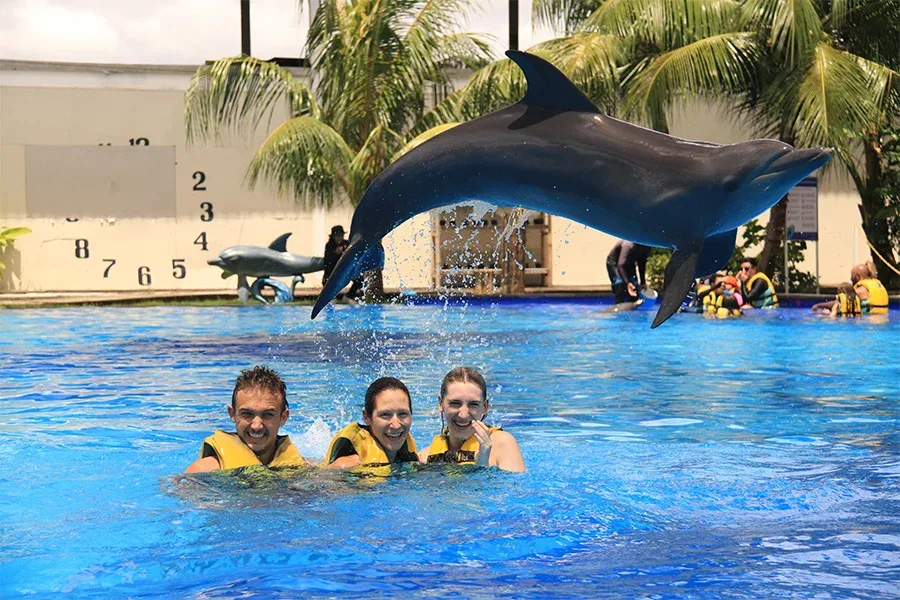Dolphins: An In-Depth Study of Biology and Evolution
Dolphins have long captivated humans with their intelligence, elegance, and uniqueness of their behavior in the ocean. But behind their charm, there is a profound scientific story about how they evolved and how their biological systems work. Understanding dolphins from a biological and evolutionary point of view not only enriches our sense of awe, but also opens our eyes to how fragile and important the marine life they represent.
Dolphin Biology: The Perfect Body Structure for the Ocean
Dolphins belong to the Cetacea family, suborder Odontoceti (toothed whale). They are marine mammals that are perfectly adapted to living in aquatic environments, even though their ancestors used to live on land millions of years ago.
The body structure of dolphins is highly aerodynamic, allowing them to swim at high speeds — some species can reach speeds of up to 55 km/h. Their skin is slippery and elastic, able to reduce friction with water, thanks to a special layer that constantly renews itself.
The internal organs of dolphins also show special adaptations:
- Efficient lungs , allowing them to quickly take up oxygen as they surface
- A heart that is able to flexibly regulate the pulse when diving deep
- A circulatory system that can distribute oxygen only to vital organs while diving, to save energy.
Despite living in water, dolphins still need air to breathe through the spray holes above their heads, which are connected directly to the lungs, not to the digestive tract.
Astonishing Intelligence
One of the biological peculiarities of dolphins is their level of intelligence. They have a complex large brain, with a very high brain-to-body ratio (encephalization quotient), only inferior to humans.
Some evidence of dolphin intelligence includes:
- Ability to learn and imitate new behaviors
- Communication through unique “click languages” and whistling
- Use of simple tools in the wild (e.g., using a sea sponge to protect the nose when searching for food on the seafloor).
- Self-awareness demonstrated through a mirror test
These abilities suggest that dolphins have a high level of social cognition, understanding concepts such as cooperation, empathy, and perhaps even culture.
The Evolution of the Dolphin: A Journey from Land to Sea
The story of dolphin evolution began about 50 million years ago from a four-legged ancestor who lived on land, known as Pakicetus. Pakicetus is a wolf-like animal that often hunts near rivers and lakes.
Over time, through the process of natural selection:
- Their bodies adapt to swim better
- Their hind legs shrank and eventually disappear
- Their nostrils migrate upwards, becoming sprays
- Their auditory system adapts to detect sounds in the water
About 40 million years ago, ancient dolphins such as Dorudon and Basilosaurus showed a completely aquatic body shape. Modern dolphins, or Delphinidae, began appearing about 5-10 million years ago.
This evolutionary transformation is one of the most remarkable examples of how species can change drastically to survive in an entirely new environment.
Special Adaptations for Life at Sea
In addition to body and behavior, dolphins also develop a variety of other adaptations:
- Ecolocation: The ability to “see” with sound, transmit sound waves and capture their reflections to detect objects and prey even in murky water.
- Thermoregulation: The presence of a thick layer of fat (blubber) under the skin to keep body temperature stable in cold water.
- High Socialization: Living in large or small groups (pods), working together in hunting, raising children, even protecting sick or injured members.
These adaptations make dolphins the apex predators in their marine ecosystems, while still maintaining complex social relationships.
Challenges of the Present: Threats to Evolutionary Sustainability
Despite having evolved over millions of years, dolphins now face threats that originate from humans:
- Pollution, especially microplastics, enter the food chain
- Climate change is changing ocean temperatures and prey distribution
- Shipping activities and underwater exploration disrupt their natural ecolocation
- Unsustainable fishing practices lead to reduced food sources
Conservation is key to ensuring that the long evolution of dolphins does not end tragically due to modern human activities.
Routine Care Commitment for Bali Dolphins
At Bali Exotic Marine Park (BEMP), dolphin welfare is a top priority. Each individual Balinese dolphin under the supervision of BEMP receives regular care and thorough health monitoring, which is carried out by a team of marine veterinarians and professional animal nurses.
These treatments include:
- Periodic health checks such as checking body temperature, dental hygiene, skin, and respiratory condition
- A balanced diet tailored to the nutritional needs of each dolphin
- Supplementation or special therapy, if needed
- Daily enrichment to maintain mental health and prevent stress, such as interactive games, response exercises, and environmental stimulation
All procedures are carried out with a no-pressure approach (positive reinforcement) so that dolphins feel safe, comfortable, and naturally active.
Not only that, but the water quality of their residence is also closely monitored every day, with environmental standards tailored to support the health of dolphins’ skin and respiratory system.
With this scientific and compassionate approach, BEMP ensures that every Balinese dolphin not only survives, but lives with dignity and dignity — being part of a conservation and education program that has a long-term impact.
This is information related to Bali dolphins that you can know, maybe one of these readers is interested in more depth how to see dolphins directly and interact directly. BEMP can provide the best offer to watch and watch the Bali dolphins up close.
In addition, you can also get knowledge and education delivered from the Bali Exotic Marine Park conservation team. Please visit our main website page or contact customer service for more information and price quotes.
